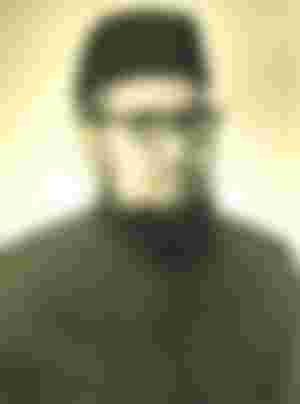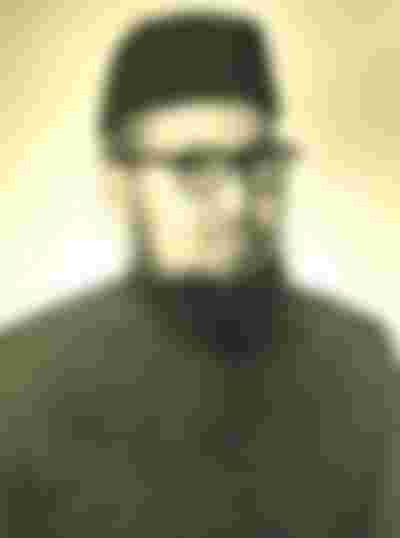Assembly, Maulvi Tamiz Uddin Khan of Faridpur, challenged Section 92-A in the court. After a long trial, the Central Court ruled in his favor on April 10, 1955. In the end, democracy won.

But the Awami League, as the largest ally of the United Front, could not share that victory. Abu Hossain Sarkar of Rangpur, nominated by former Chief Minister Sher-e-Bangla AK Fazlul Haque, was made the Chief Minister of East Pakistan. With the appointment of Abu Hussein as Chief Minister in August 1955, the United Front of many hopes fell. Meanwhile, 20 members of the Awami League's Gana Parishad became members of a coalition party called "Muslim League Party" and 19 members joined the Krishak-Sramik Party, transforming the Awami League into a minority opposition party in the Gana Parishad.
The following year, with the support of several smaller parties, the Awami League took the initiative to bring a no-confidence motion in the cabinet to the Abu Hossain government. Finally, on 30 August 1957, the government resigned from the cabinet.
Meanwhile, in March 1958, Sher-e-Bangla AK Fazlul Huq was appointed Governor of East Pakistan.
After the fall of the government cabinet, Governor Sher-e-Bangla AK Fazlul Haque formally invited Leader of the Opposition Ataur Rahman Khan to form the cabinet.
On 6 September 1958, a coalition government of the Awami League was formed in East Pakistan under the leadership of Ataur Rahman Khan.
Just a week later, Hussein Shaheed Suhrawardy became the Union Prime Minister of Pakistan in a coalition with several West Pakistani parties.
The Awami League government was established in both the provinces and the center.
Speaker of the Assembly Maulvi Tamizuddin Khan of Faridpur challenged the 92-A rule in the court of law. On April 10th 1955, after a long trial the court had ruled in his favor. Eventually democracy prevailed.

However Awami League could not take advantage of this victory despite being the largest party. Abu Hussain Sarkar of Rangpur, a designee of Sher e Bangla A K Fazlul Hqa and his party, became the Chief Minister of East Pakistan. The United Front, which brought lots to hope to millions of people was officially dead when Mr. Abu Hussain Sarkar formed ministry on August 1955. On top of that 20 Elected Members of Awami League joined a coalition named “Muslim League Party” and 19 members joined the KSP, so from the largest party of the United Front, Awami League became the minority opposition in the Provincial Assembly!
The next year, with the support of smaller parties, the opposition lead by Awami League prepares a no confidence move against the Sarkar ministry. Finally on 30 August 1956, the Government resigned.
Meanwhile in March 1956, Sher e Bangla Fazlul Haq had been appointed Governor of East Pakistan.
After the fall of the cabinet of Abu Hussain Sarkar, Governor Sher Bengali A K Fazlul Haq invites Ataur Rahman Khan, Leader of the Opposition, to form Ministry.
On 6 September 1956, the Awami League coalition Government was established in East Pakistan.
Just one week later Mr. Hussain Shahid Suharawaradi becomes the Prime Minister of the Pakistan Central Government after forming a coalition with some other parties of West Pakistan
Thus Awami League becomes the ruling party in both Provincial and Central Pakistan Government.
- Historic Kagamari Convention
On 7-8 February 1957, the Convention of Awami League is held in Kagmari of present day Tangail District, mostly due to the initiative of Mawlana Abdul Hamid Khan Bhashani. The convention takes place at such a time when Awami League is the ruling party of both Provincial and central Government.

A little history before we go to details - although Mr. Bhashani was the President of East Pakistan Awami League since its birth in ’49, when Mr. Suhrawardi later formed All Pakistan Awami League, Mr. Suhrawardi and his allies Sheikh Mujibur Rahman , Abul Mansoor Ahmed, Atarur Rahman Khan, Manik Miah at el. became the main decision makers of the party. And as ruling party AL had to fight with the West Pakistanis on one side and with the Krishok Sramik Party on the other side in East Pakistan itself. Despite that there were many good things done by this Government including establishment of Film Development Corporation (FDC), Jute Marketing Corporation, Engineers’ Institute and so. But Mawlana Bhashani maintained his usual Anti-Government attitude - which was very uncomfortable for the ruling party.
Finally, after a disagreement with Mr. Suhrawardi about his foreign policy, ignoring strong requests from the Suhrawardi side, Mr. Bhashai submits his resignation in March ’57. In June of this year, Mawlana Bhashani and his followers formed a new party, the National Awami Party (NAP). We have to wait for ten more years to realize the spirit of this great leader.
Another important party decision is made – no one can hold both party office as well as Ministry. In response to that. Mr. Sheikh Mujibur Rahman resigns from the position of Minister of Industries and Commence for East Pakistan Government and continues his responsibility as the General Secretary of the Party.
After the resignation of Mawlana Bhashani, Mr. Mawlana Abdur Rashid Torkobagish is made President of Provincial Awami League.

